Represents an object that is used or produced during the activity.
Archives: Templates
Templates and model types in the QualiWare platform.
Objective
An objective can be represented as a goal or target that a person or organization strives to achieve.
The objective is a clear and defined target, with a visual representation of the progress towards it and the path being taken to reach it.
Object Flow
Similar to ControlFlow, but it carries data or objects between actions.
Notification Template
A notification template is used for sending standard emails and notifications on the QualiWare app. – and with GovernanceGetMethods the data can be dynamically taken from the relevant object.
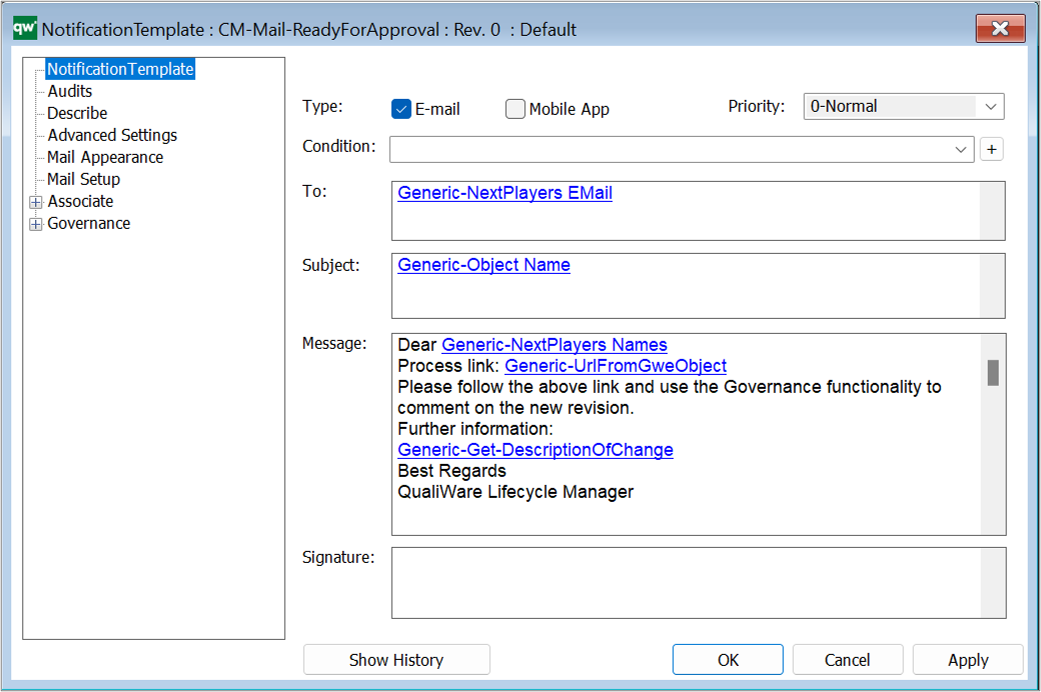
Type: Check if the notification is an email of notification in mobile App
Priority: Priority set on the email
Condition: It is possible to add a condition (or a list of conditions) that needs to evaluate to true before the notification is send.
To: Who is the receiver of the notification – it can be a static written email or use a GovernanceGetMethod
Subject: What is the subject header of the email notification – GovernanceGetMethod can be used again to retrieve data dynamic from the object
Message: Text of the email notification– GovernanceGetMethod can be used again to retrieve data dynamic from the object
Signature: Signature on the email
Insert a Dynamic Value (governance get method) in the text
There is a whole set of Governance Get Methods included in the available standard governance workflows.
Right click to insert a governance get method in the text in an email field.
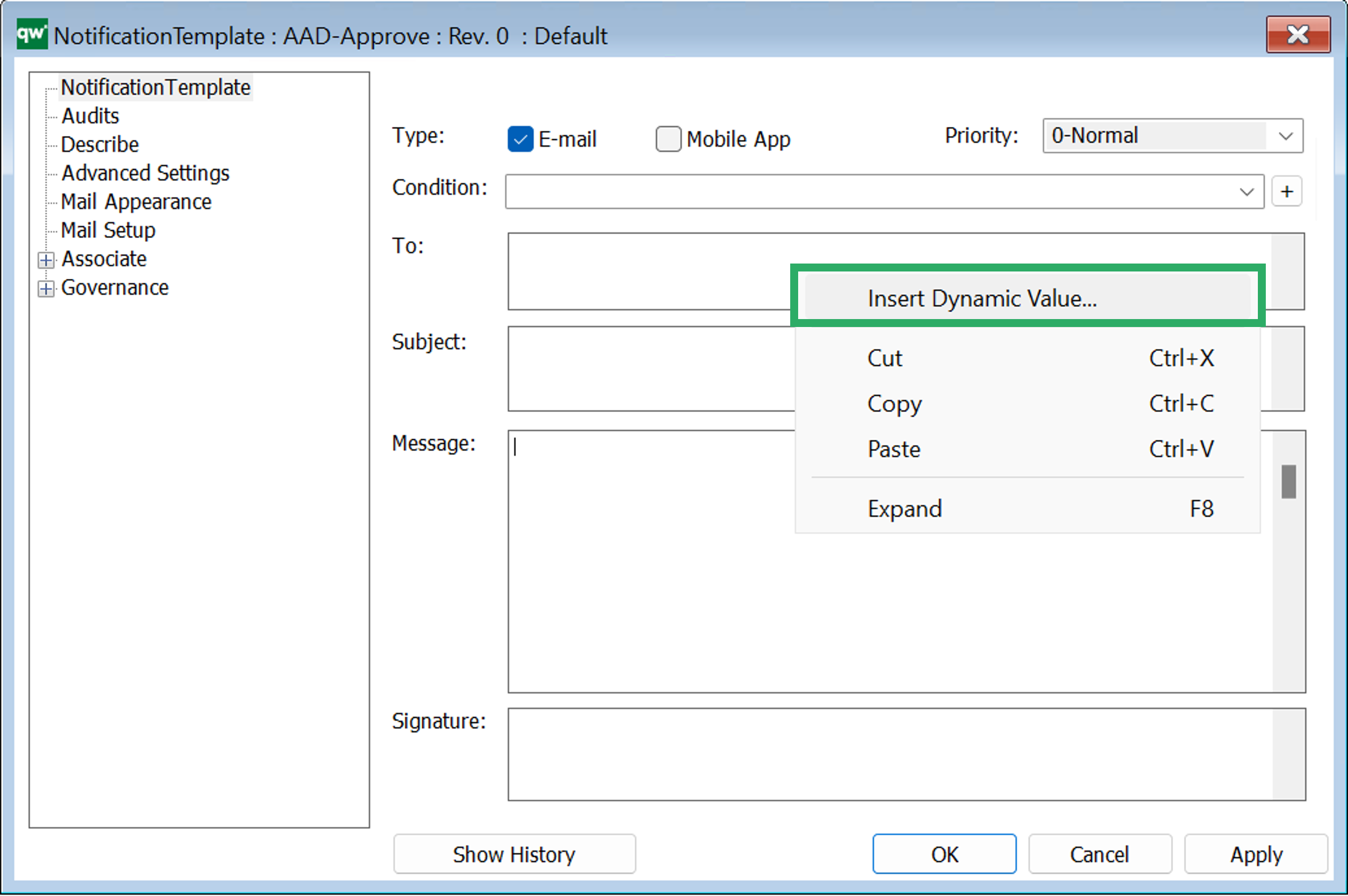
Once you have selected “Insert Dynamic Value” a list of GovernanceGetMetods come up, and you can select the method.
If you have expanded the text editor (F8), you can right-click and select “Insert Link” to choose the GovernanceGetMethod.
Notification Templates – Mail Setup
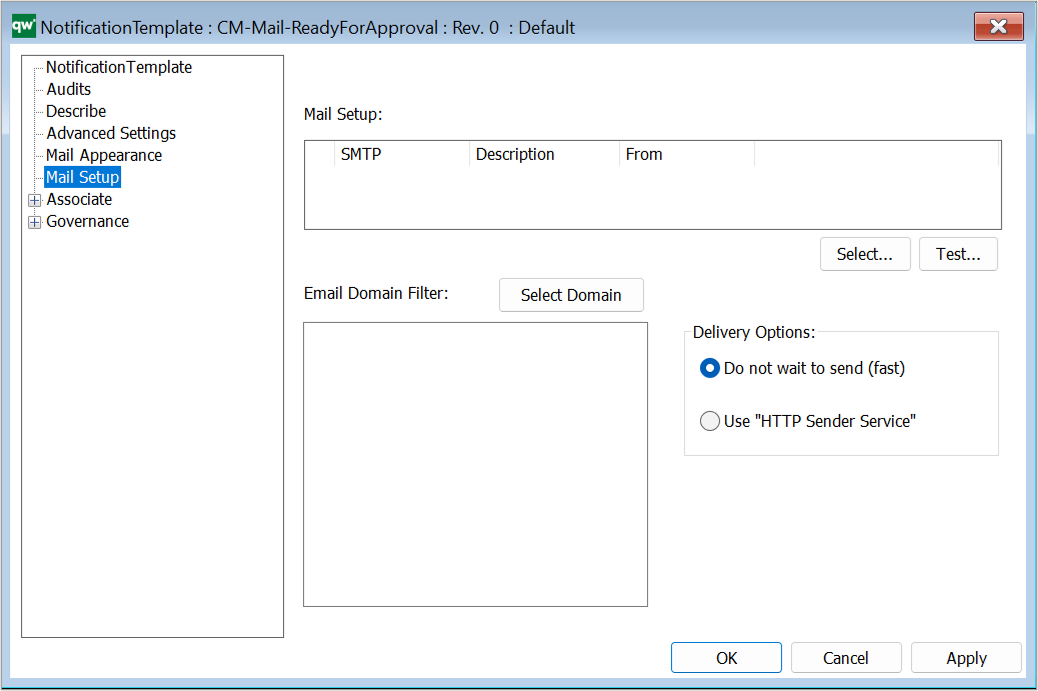
Mail Setup: You setup the mail in the QEF Admin Console and insert it into this field.
Email Domain Filter: If you want to filter which emails it is allowed to send to, select the Domains here.
Delivery Options:
- “Do not wait to send (fast)”: which means that emails (notifications) will be sent immediately. If something goes wrong in sending the email, and you haven’t set up the QCL Engine service “EmailSender” in the HTMLPublisher, then the email will never be sent.
- “Use ‘HTTP Sender Service’”: will only send emails if the EmailSender QCL service has been added to the HTMLPublisher.
News Item
The News Item template is used to post and share News on the collaboration platform.
When you create a NewsItem you can add a short description, a full description as well as information about when it should be released and archived.
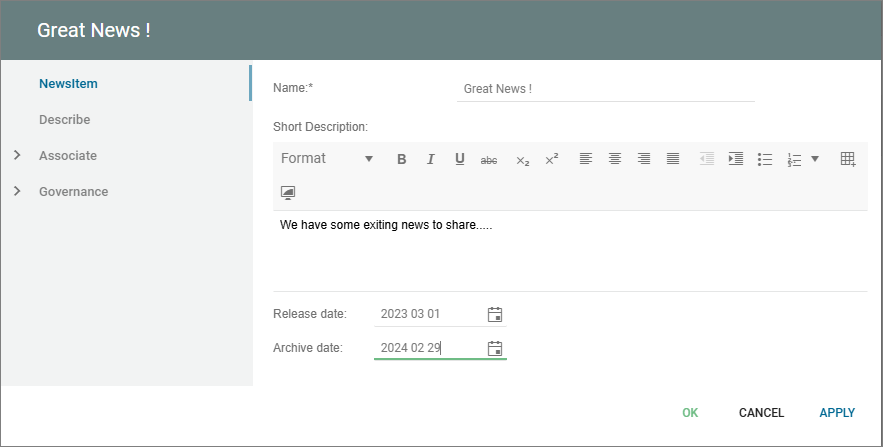
The relevant news will be shown as standard on the News Tile on the Desktop.
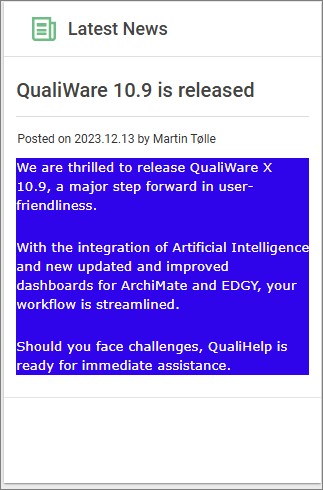
A list of available News items can be found in the leftmenu.
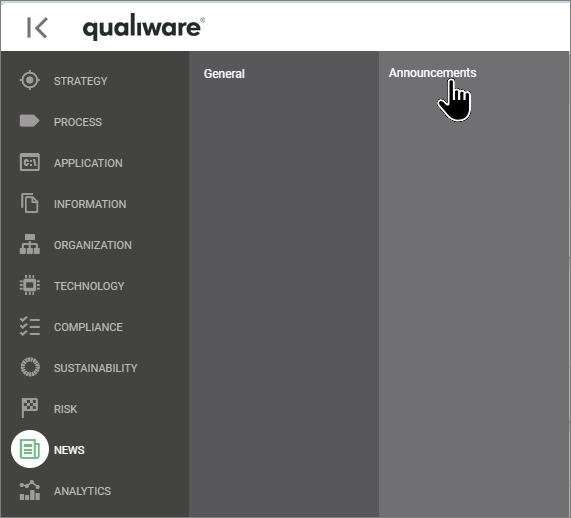
Model View
Description of this template will be available soon.
Model Presentation
The ModelPresentation is an attempt to make it easier for the end-user to understand the meaning of the model when viewing it on the Web.
The ModelPresentation consists of a series of models or model parts shown in a sequence on the web. The sequence may include pictures, sound, video or text to explain the view of the model.
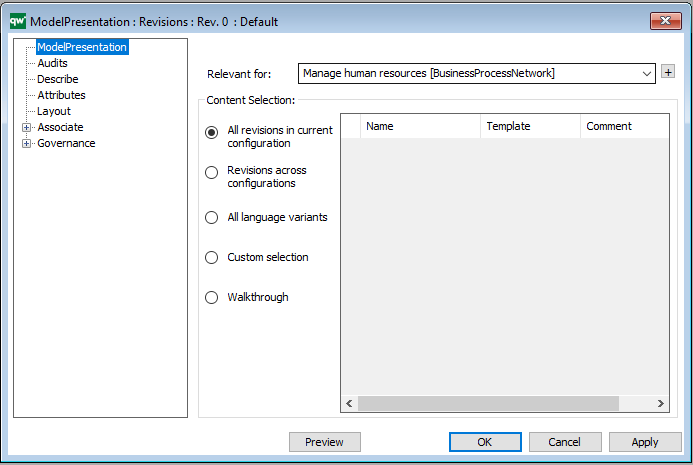
From the main settings, you can configure the scope of the presentation:
- Relevant for:
- Here you map the model that is subject to the presentation
- Content Selection:
- Here you select the content of the presentation (All revisions, Revisions across configurations, All language variants, Custom selection, Walkthrough)
Once the ModelPresentation is created and associated with e.g. a diagram in the “Relevant for”, the presentation becomes available on the web, as a tab in the classic view.
The presentation gives the user a standard set of “video control buttons”, so it is possible to jump forward, backward, stop the automatic sequencing of pictures and so on.
This example shows a definition of a ModelPresentation that fades through the all revisions of the BusinessProcessNetwork.
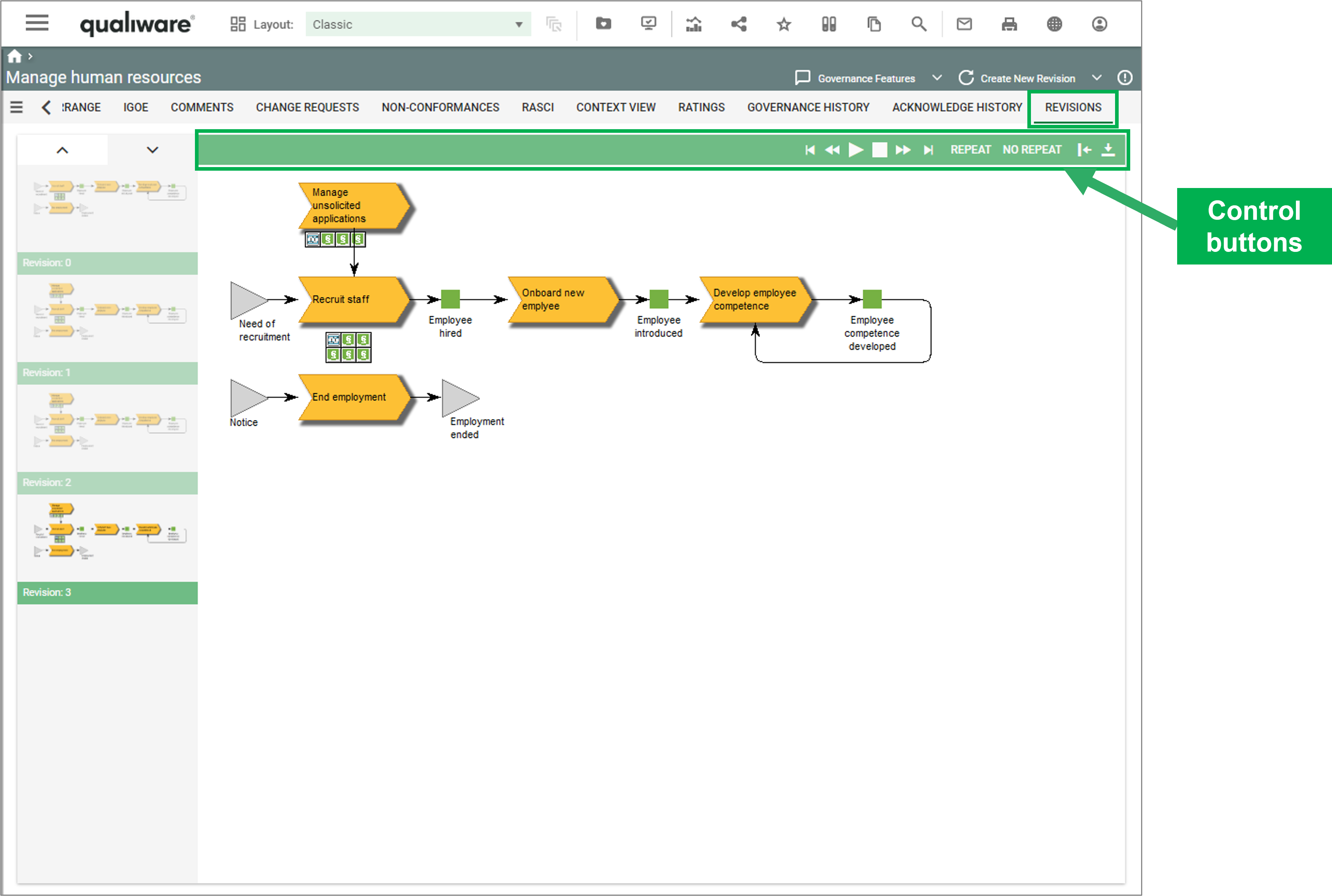
The custom selection is a selection of diffrent models, which can be shown in the model presententer in relation to content selected in the “Relevant for”:
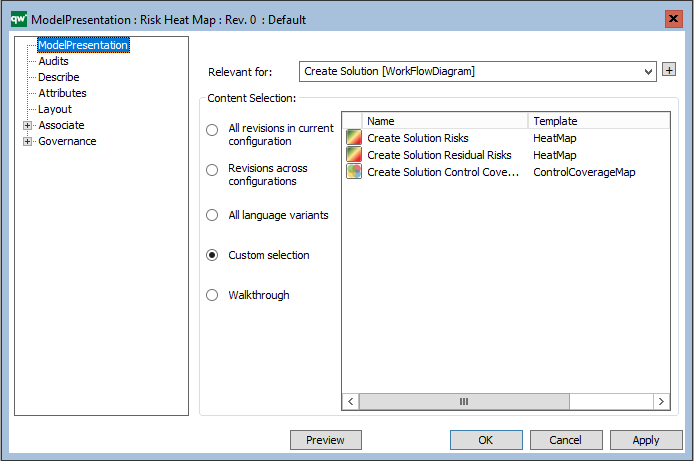
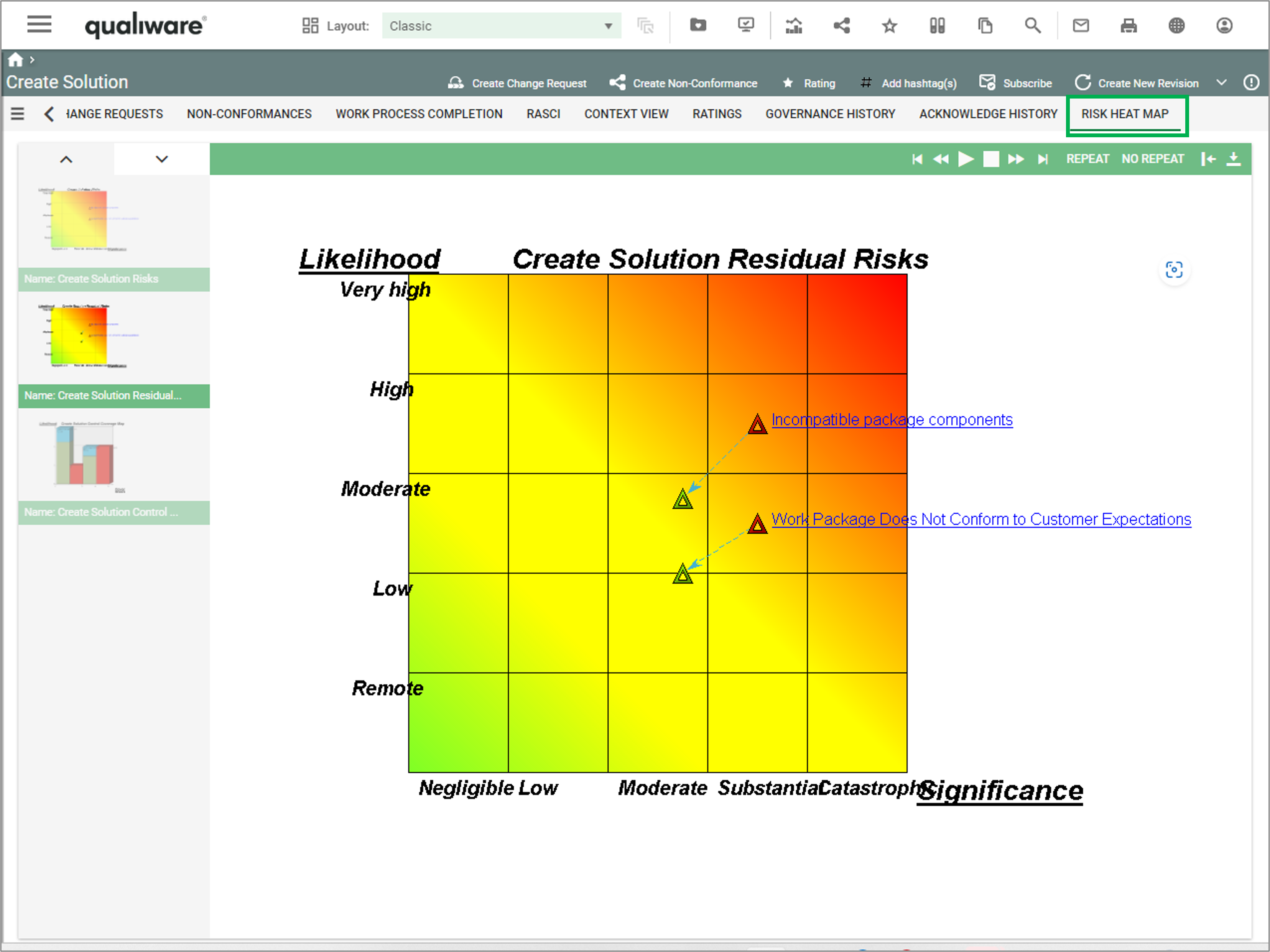
Another example of a ModelPresentation is the illustrated walkthrough of a diagram. Here it is a CustomerJourneyMap that shows the journey of a persona interacting with our enterprise. Each interaction is illustrated by a TouchPoint, and the ModelPresentation includes real life explanation, photos, etc. to illustrate the journey.
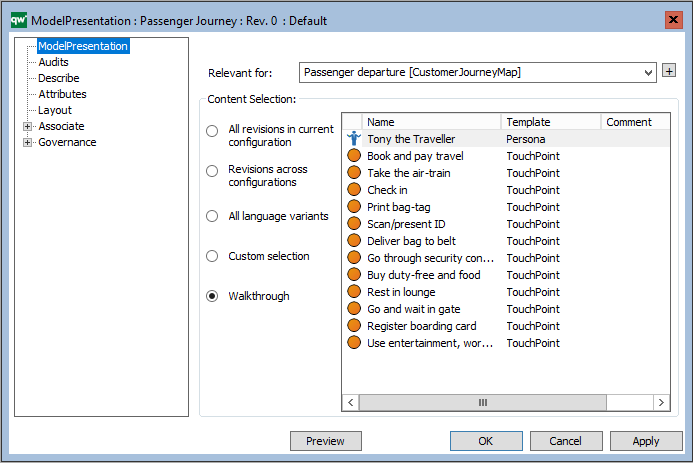
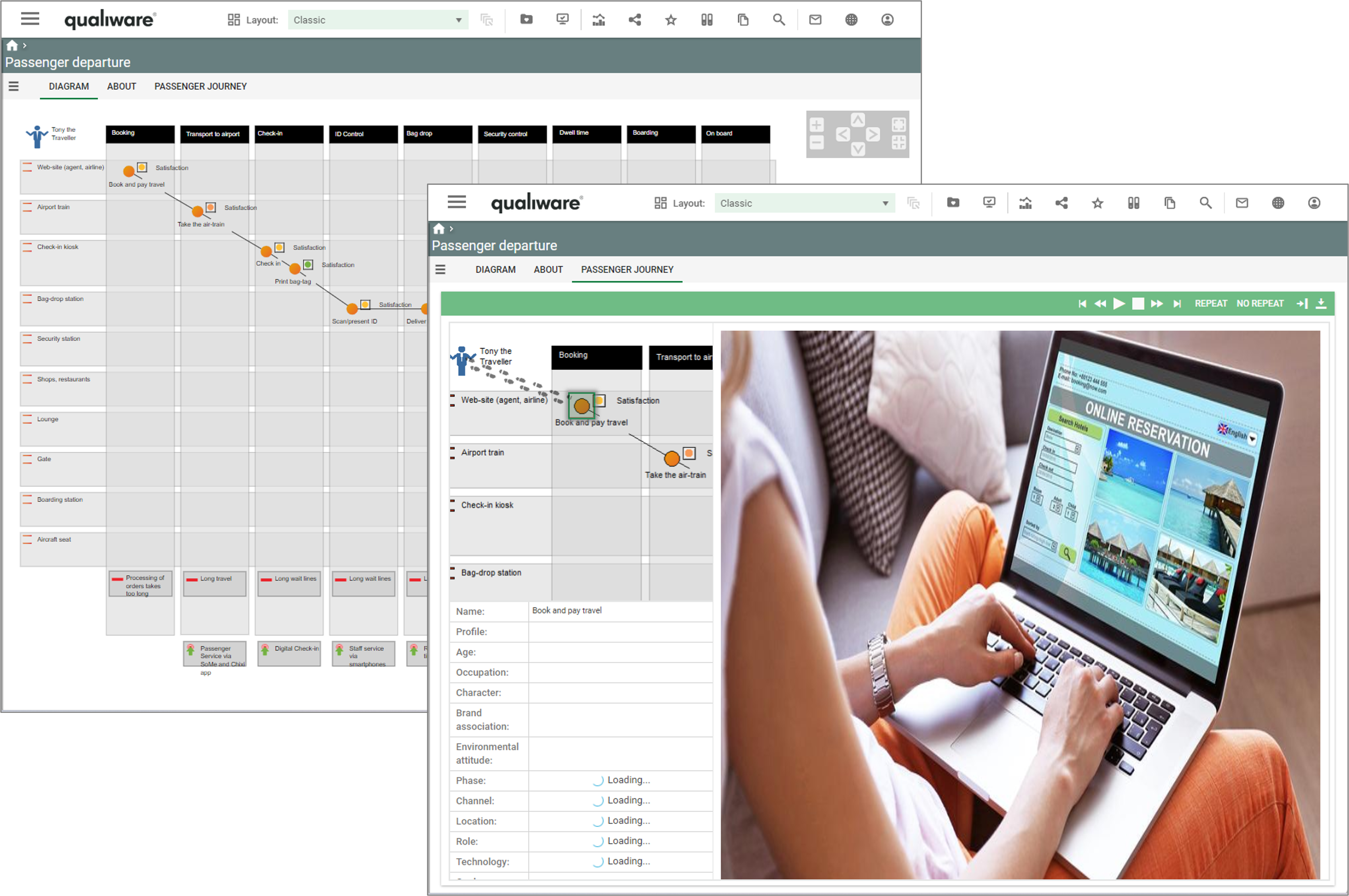
As illustrated in the example above with the customer journey, it is possible to show pictures and video associated to the object.
You can specify what attributes should be shown where in the “Attributes” tab.
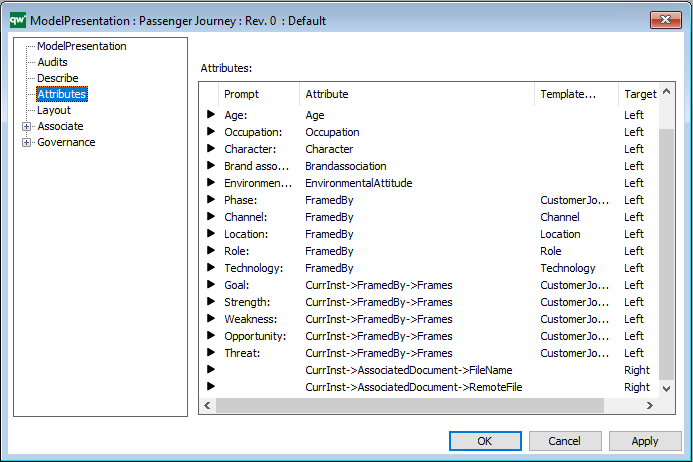
You specify the layout of the presenter on the “Layout” tab.
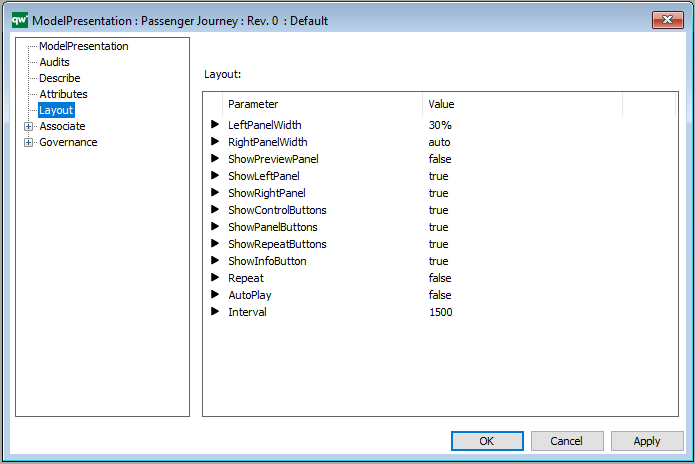
Mission
The overall purpose or objective of an organization, project, or initiative.
The mission describes the fundamental reason for the existence of the organization and provides guidance for decision-making and direction for planning and actions. It usually reflects the values and aspirations of the organization and serves as a reference point for stakeholders to understand the goals and objectives of the organization.
Milestone
In a work model, a “Milestone” symbol is used to represent a significant point or achievement in a project or process. A milestone is a way to track progress and measure success in achieving a particular goal or objective.
Milestones can be used in different ways within a work model. For example, they can be used to mark the completion of a major phase or task in a project, the achievement of a specific deliverable, or the attainment of a particular performance target. Milestones can also be used to identify critical points in a process or project, such as the point where a decision must be made or a resource must be allocated.
Method
Description of this template will be available soon.